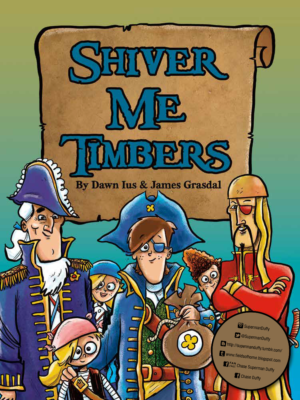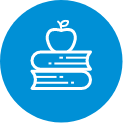
Grade 1 Learning Objectives for “Shiver Me Timbers”
Jump to Subject

English Language Arts
General Learning Objective
1. Students will listen, speak, read, write, view and represent to explore thoughts, ideas, feelings and experiences.
Specific Learning Objectives
1.1 Discover and explore
Express ideas and develop understanding
- Share personal experiences that are clearly related to oral, print and other media texts
- Talk with others about something recently learned
- Make observations about activities, experiences with oral, print and other media texts
Experiment with language and forms
- Experiment with different ways of exploring and developing stories, ideas and experiences
1.2 Clarify and Extend
Consider the ideas of others
- Listen and respond appropriately to experiences and feelings shared by others
Extend understanding
- Ask questions to get additional ideas and information on topics of interest
General Learning Objective
2. Students will listen, speak, read, write, view and represent to comprehend and respond personally and critically to oral, print and other media texts.
Specific Learning Objectives
2.1 Use Strategies and Cues
Use prior knowledge
- Use knowledge of how oral language is used in a variety of contexts to construct and confirm meaning
- Use previous experience and knowledge of oral language to make connections to the meaning of oral, print and other media texts
- Use knowledge of context, pictures, letters, words, sentences, predictable patterns and rhymes in a variety of oral, print and other media texts to construct and confirm meaning
- Use knowledge of print, pictures, book covers and title pages to construct and confirm meaning
Use comprehension strategies
- Talk about print or other media texts previously read or viewed
- Identify the main idea or topic of simple narrative and expository texts
Use textual cues
- Preview book cover, pictures and location of text to assist with constructing and confirming meaning
General Learning Objective
3. Students will listen, speak, read, write, view and represent to manage ideas and information.
Specific Learning Objectives
3.1 Plan and Focus
Focus attention
- Explore and share own ideas on topics of discussion and study
- Connect information from oral, print and other media texts to topics of study
3.2 Select and Process
Access information
- Use text features, such as illustrations, titles and opening shots in video programs, to access information
- Use questions to find specific information in oral, print and other media texts
3.3 Organize, Record and Evaluate
Evaluate information
- Recognize and use gathered information to communicate new learning
3.4 Share and Review
Share ideas and information
- Share ideas and information from oral, print and other media texts with familiar audiences
- Answer questions directly related to texts
General Learning Objective
4. Students will listen, speak, read, write, view and represent to enhance the clarity and artistry of communication.
Specific Learning Objectives
4.3 Present and Share
Demonstrate attentive listening and viewing
- Ask questions to clarify information
- Be attentive and show interest during listening or viewing activities

Science
Topic E: Needs of Animals and Plants
General Learning Objective
1–11 Describe some common living things, and identify needs of those living things.
Specific Learning Objectives
3. Identify ways in which living things are valued; e.g., as part of a community of living things; as sources of food, clothing or shelter.
7. Identify the requirements of plants to maintain life; i.e., air, light, suitable temperature, water, growing medium, space; and recognize that we must provide these for plants in our care.

Social Studies
Topic: 1.1 My World: Home, School, and Community
General Learning Objective
Students will demonstrate an understanding and appreciation of how identity and self-esteem are enhanced by their sense of belonging in their world and how active members in a community contribute to the well-being, growth and vitality of their groups and communities.
Specific Learning Objectives
1.1.2
Value the groups and communities to which they belong:
1.1.3
Examine how they belong and are connected to their world by exploring and reflecting upon the following questions for inquiry:
1.1.4
Determine what makes their communities thrive by exploring and reflecting upon the following questions for inquiry:
Topic: Dimensions of Thinking
General Learning Objective
Skills and Processes
Specific Learning Objectives
1.S.3
Develop skills of geographic thinking: